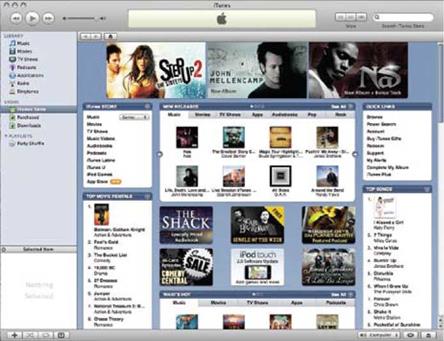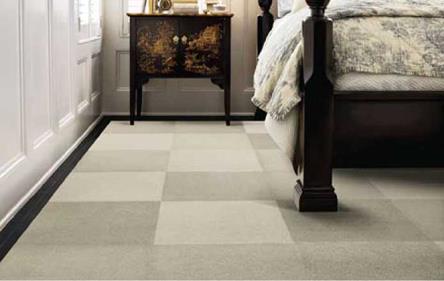The Metamorphosis of Transmaterialization 250
Turning a Service into a Product 253
What is a service? 259
249
Enter code DITPDE for 15% off any Rosenfeld Media product directly
purchased from our site: http:Zrosenfeldmedia. com
|
T |
ransmaterialization is a strange word, but the process is a new phenomenon not easily recognized by most people. Sometimes called servicizing, defined simply, it’s the process of turning a product into a service. However, many people still can’t understand how this is accomplished without an example. (How does a tangible product turn into an intangible service?) So, an example is in order.
The Metamorphosis of Transmaterialization
Consider how people bought music in the past. First, there were records, followed by tapes of different types (reels, eight-tracks, cassettes, and so on), and finally, starting in the 80s, compact discs (CDs). All of these are physical products, even though the music itself wasn’t necessarily physical. (It could already be transmitted across radio waves, for example.) Most people associated music with a physical object. Now, however, music is completely digital and even more virtual. The rise in music downloads (both legal and illegal) is displacing
the sale of the physical CDs (though some, like records, will probably always be traded by collectors). In this way, the physical product has been displaced by a nonphysical service.
The best example of this is Apple’s iTunes music store (see Figure 8.1). Not only does the service enjoy 75 percent of the entire market for music downloads (and sells more music than any other company in the U. S.), but it is also
|
FIGURE 8.1. http://www. flickr. com/photos/rosenfeldmedia/3261647424 The iTunes music store is the most successful platform for distributing digital music, TV, and films. |
no longer limited to just music. The iTunes music store now sells films, television shows, applications (remember when those, too, were shipped on CD-ROMs?), and even books (as audio books). Where it would have been unheard of to discuss these products as services once upon a time, we now regularly conceive and design new systems that do exactly this.
Of course, simply being a service doesn’t mean that there isn’t a life cycle impact. In 2003, Digital Europe conducted a life cycle analysis of music CDs bought in stores, bought from Amazon and shipped to customers, and music downloaded from services like iTunes. Their study showed that all of these solutions had an impact of some kind.[54] For example, music services require electricity to run services and lots of equipment to store, process, and transmit their data around the world. It’s not insignificant, either. However, even the demands of electronic data are a significant improvement over the demands of producing and distributing light-weight CDs and shipping them around the world.
TABLE 8.1
|
THE ENVIRONMENTAL IMPACT OF DIFFERENT FORMS OF MUSIC DISTRIBUTION |
|||
|
Scenario* |
Abiotic Impact (kg) |
Biotic Impact (kg) |
Water Use (kg) |
|
CDs bought in physical store |
1.56 |
0.09 |
39.52 |
|
CDs bought online, shipped to homes |
1.31 |
0.06 |
46.73 |
|
Music downloaded (user burns CD-R) |
0.67 |
0 |
23.3i |
|
Music downloaded (no CD-R copy) |
0.60 |
0 |
20.29 |
|
* Inclusion of computer materials impact the same in each scenario |
The results of this study show a considerable reduction in impact for downloaded music over physical CDs (as we might have guessed). The impact isn’t zero, but it’s significantly less in all categories. Incidentally, the study also looked at social impacts as well.
Turning a Service into a Product
Digital music isn’t the only example where this process has been applied. In fact, rental cars are an old example of turning a product into a service. While rental cars are still physical products, the service of renting or leasing to customers changes both the nature of the transaction and the impact it has on the environment.
When cars are rented from a fleet, they are almost always used more efficiently than those purchased by individuals. For example, rental cars are driven far more than private cars.
While, at first, this may not seem advantageous, consider how infrequently many private cars are used. Rental cars offer the potential of using cars more efficiently. For example, renting a large car (such as an SUV or station wagon) for a weekend family trip creates much less impact than driving that same car every day while commuting or shopping (see Figure 8.2). Largely, this is still a matter of social convention since many people buy cars that fit their occasional needs better than their habitual ones.
… rental cars are an old example of turning a product into a service.
 |
However, the service of renting cars can also maintain the cars in optimal condition, merely making them available when people need them. The same can be said for recreational vehicles like motor homes, boats, and jet skis, as well as recreational or vacation property. If people are able to rent these easily when they desire, then they don’t need to buy and keep their own. For most people, this is not only a more economical alternative, but it’s also a more ecological one.
Similarly, new models are arising as well. Consider the increase in urban car-sharing services, like City Car Share and Zip car. By taking a product (cars, vans, and trucks) and offering it as a service (the right kind of transportation exactly when you need it), these companies are offering people a more efficient and effective variety of vehicles than they could ever achieve individually. One study[55] suggests that car-share services displace between six and twenty private cars for each car in the service, and since customers plan their trips more carefully, customers drive between 50 and 68 percent fewer miles. In effect, these services offer mobility, not vehicles, and that is the conceptual translation that transmaterialization enables. To be sure, however, this isn’t always an easy translation for customers to make. Many U. S. citizens still aren’t ready to accept mobility as a service, rather than a product. Car sharing isn’t for everyone, but more and more customers worldwide are finding that it may be a better use of their money, as well as a better solution for the environment.
… these services offer mobility, not vehicles, and that is the conceptual translation that transmaterialization enables.
Sometimes innovation works; sometimes it doesn’t. An example of when it didn’t work involves an innovative carpet company, Interface (see Figure 8.3). In the late 90s, Interface revolutionized the environmental impact of one of the worst industries in the world. (You should know that traditional carpet is terrible stuff,
|
FIGURE 8.3. /Я http://www. flickr. com/photos/rosenfeldmedia/3265589106 Interface’s innovative solution allows carpet to be more easily installed, replaced, and recycled. |
from an environmental perspective.) Interface changed everything about the materials and processes they used to make recyclable, less toxic carpet tiles that lasted longer, were better for workers as well as customers, and were taken back by the company when customers were finished with them.
However, when Interface took their ideas one step further and tried to reframe carpet from a product to a service (leasing floor coverings), they weren’t as successful. For the most part, business customers just couldn’t wrap their heads around the idea that they weren’t purchasing carpet, but they were leasing great-looking floors. Even though Interface guaranteed that they would maintain the carpet (including replacing damaged sections) and update, recycle, and dispose of it at their own expense, most people still couldn’t make the cognitive leap that they would be paying monthly for something they could otherwise buy outright—even if it represented an overall savings.
Sometimes innovation works; sometimes, it doesn’t.
Helping customers think of solutions in new ways is one of the challenges that transmaterialization creates for developers of new services. Services are not foreign to product companies. Each company that sells a product must service it in some way. This service might simply include offering repairs or maintenance. So every product company already thinks about services to some extent, which means that it’s not an entirely foreign concept. What transmaterialization offers is a mechanism to rethink the value that those products provide and enhance them by either adding valuable services around the products or by completely transforming the products and their financial models into new solutions.





